Fruit Tree Care: After Planting
Fruit Tree Pruning Basics
Basic Fruit Tree Pruning Tips
Pruning can be a delicate process. As Michael Phillips puts it, pruning is almost like time traveling as you envision what the tree will look like in the future after you make your pruning cuts. Pruning varies not only by species, but by variety, time of year, desired outcome, age, and other growth habits of the tree in question.
Here are a few tips to keep in mind:
- Practice good orchard hygiene: sterilize your pruners between trees, especially if summer pruning or pruning diseased branches out
- Do not remove more than ⅓ of the tree in a year
- To prevent bacteria from entering your cut, prune just after the collar* when making a thinning cut - don't prune it off, and don't leave a stub 2cm long
- The first 2 (dwarf) to 3 (semi-dwarf/full size) years, focus on vegetative growth, establishing a strong structure to support the weight of future crops. After your 2-3 years of dormant, vegetative-growth-inducing pruning, switch to summer, fruit-focused pruning
- Remove narrow crotch angles (where the trunk and the branch meet) since these are less sturdy
- Remove branches that are growing back into the tree or across more desirable branches
- Don't prune your tree unless the forecast is above ~0°F/-17°C for the next 7 days when winter pruning. Early spring is best, before buds swell.
- Prune the canopy so it is open with good airflow and light penetration to help the fruit ripen and reduce the presence of fungal diseases
- Thinning Cut: This is done by cutting a branch off an existing branch. It produces less of a branching/vegetative effect. Think of energy flowing through the branch, and after you have done a thinning cut the energy just continues to flow to the remaining branch.
- Heading Cut: This is done by cutting the tip of a branch off in the middle of it, away from other smaller branches branching off. Think of energy flowing through the branch, and after you have done a heading cut, it has nowhere to go so it pops out in all directions: on young wood, it produces a strong branching effect. The first 3-4 buds below the cut will naturally shoot up with vertical growth, letting buds 4-6 create nice naturally horizontal little branches a few weeks later. Make a heading cut in the spring, come back and remove those vertical shoots in June/July, and you'll set your tree up to put the rest of its growing energy into developing those nicely angled, horizontal branches for the rest of the season.
- For fruit production, establish horizontal branches, and summer prune after the first growth flush (usually June/July for our area) to set your tree up for the following year. Most fruit trees produce fruit on 2+ year old branches. As a branch becomes more horizontal, the hormones in the branch change and grow spurs which will produce fruit the following year ('spur-bearing'). Some fruit trees produce on 1 yr old branches, from the tips ('tip-bearing'), like quince trees, or the Golden Russet apple so this rule doesn't always hold true. Check the variety description on our website to see if it's tip-bearing or spur-bearing.
- For vegetative growth, prune in spring while the trees are still dormant (Feb/March in our area). A general rule of thumb is the harder you prune, the more vegetative growth you will get; however especially on old trees, never prune more than 1/3-1/2 of the tree, or you risk killing it completely.
- Apple and Pear pruning for fruit production in more detail: HERE
- Cherry pruning for fruit production in more detail: HERE
- Peach pruning for fruit production in more detail: HERE
- Plum pruning for fruit production in more detail: HERE
*the collar on a tree refers to that little folded bark ring right at the beginning of a branch. It helps the tree heal over with callous tissue after being cut. HERE is a link with photos showing this.
If you never prune your fruit trees, this may cause:
- delayed fruit production
- more susceptibility to fungal diseases
- fruit to ripen only on the outer canopy
Shapes to consider:
- Open center/vase: common for prunus species, or full size and semi-dwarf apples and pears. Just like it sounds, this method involves sculpting your trees to have 3-4 'leaders', shaped like a vase or a bit like an upside down Christmas tree. This can also help diffuse the height on high-vigor trees, by encouraging the tree to spread it's vegetative growth out rather than up.
- Scaffold with a central leader: common for apples and pears, this method is all about creating scaffold branches about 2 feet apart up the central trunk. The first scaffold is typically 2/3' off the ground, depending on the orchardist. Each scaffold has 3-4 scaffold branches radiating evenly, horizontally outward.
- Espalier: this creates a sort of two dimensional tree, grown on a support of some sort (eg. fence, wire trellis, building wall). Be sure to use spur bearing varieties!
Troubleshooting Fruit Tree Problems
Why isn't my tree bearing fruit?
Nothing is more frustrating than having a tree that refuses to bear fruit. There are a few common reasons why trees have not borne fruit yet including:
- Age: fruit trees often take several years to begin bearing fruit, you can find approximate times HERE for when each kind of tree generally begins producing fruit
- Variety: some varieties naturally take longer to bear fruit than others, this is called precocity. Highly precocious varieties will bear fruit sooner than varieties with low precocity. We list the precocity of our trees on the product description on our website. Do some research on what varieties you have to see if they may be slower to get started.
- Rootstock: dwarf trees will come into production sooner than semi-dwarf or full size trees.
- Pollination: many fruit trees, especially apples and pears, need to be planted with another variety in order to cross pollinate and produce fruit and all trees will produce more and better fruit when planted with a compatible variety. Some of the factors to consider for pollination are:
- Distance: is there another tree of the same species but of a different variety planted within 100ft of your tree? If the other tree is too far away then it will not pollinate.
- Bloom time: does the bloom time of your trees overlap? If the bloom times do not overlap then pollination will not take place. See HERE for more information on bloom time
- Triploid apple: If you have two apples and one is not bearing fruit while the other is, check to see if the one bearing fruit is triploid. Triploid trees have sterile pollen and cannot pollinate their neighbors.
- Plums: Plums can just be fickle when it comes to pollination! Try cutting off the flowering branch of a variety of plum that in known to pollinate yours, putting it in a glass jar full of water, and tying it among the branches of your plum tree to encourage pollination.
- Frost: late spring frosts can kill the blossoms on fruit trees and prevent fruit formation, this is very common with stone fruits in cooler climates like ours but there are ways to prevent frost damage. See HERE for some ideas on dealing with frost.
- Pruning: it is important to keep up with pruning and maintaining your tree as a failure to do so can limit or prevent fruit formation, or yield smaller fruit than desired
What is wrong with my tree? - Pests and Diseases
Like all living things, fruit trees and other plants can be afflicted by a variety of ailments including different kinds of pests and diseases. All of these have tell-tale signs and different treatments, so it is important to know what you are dealing with.
We have a handy overview of common fruit tree pests and infectious disease along with natural ways to deal with them HERE. Our Holistic Spray is one of the main ways we handle pests and diseases in our orchard!
We would highly recommend checking out OMAFRA's integrated pest management (IPM) resource HERE for a more in-depth look at the problems your trees may face. Their information is quite comprehensive and includes a mix of natural and conventional control methods.
For anyone serious about IPM, Orchard People have an excellent IPM course HERE that will provide you with the skills, tools, and resources necessary to properly track and deal with the problems that pop up.
What is wrong with my tree? - Environmental Stressors
Along with pests and infectious diseases*, your tree may begin to look unwell if certain environmental factors such as improper watering or nutrient deficiencies come into play.
Common environmental factors such as too much sun and too much or too little water can have the following symptoms:
- Too much water: yellowing leaves, small leaves, root rot, poor quality fruit that ripens early
- Too little water: wilting and yellowing leaves, fruit ripens and/or drops early, in conjunction with high heat edges of leaves will turn brown or entire leaf may brown and drop off tree
- Sunscald: irregular reddish-brown sunken patches on fruit surface, can be alleviated with proper watering, nutrients, and adding shade cover
If nothing else seems to explain what is wrong with your tree, the likely culprit could be some kind of nutrient deficiency. Based on what is deficient, nutrient deficiencies can have a wide array of symptoms like browning or yellowing leaves, leaves growing unusually, and various problems with the fruit like dark sunken spots, cracking, and brown patches. OMAFRA has a list of some symptoms on their website HERE.
If you believe your tree is suffering from a nutrient deficiency, we would recommend getting a soil test and/or a plant tissue test to see what the problem may be. Most towns/cities should have an agricultural lab where you can get these tests done or you can mail them to a lab. We get ours done at AgriAnalysis in Stratford for about $10 each and get the following results back.

As you can see, we have some things to work on; as does just about every soil as it's constantly changing! Soil tests are a great first piece of the puzzle in helping to improve nutrients in your soil, crops, and food. If you want to learn more about soil, soil tests, and amending your soil accordingly, we recommend THIS COURSE from Orchard People.
*Ailments caused by environmental stressors such as nutrient deficiencies are considered non-infectious diseases
The Holistic Spray
Our Holistic Spray, based on the spray developed by Michael Phillips, is the primary way we deal with pests and diseases in our orchard. This all-natural spray provides the following benefits:
- deters insect pests
- mitigates disease by pre-colonizing plant surfaces with beneficial microbes
- strengthens the tree's ability to fight off pests and diseases by giving it a nutritional boost
- can reduce the need for other organic chemical inputs

Based on our own experience with the spray, we would highly recommend it! As the saying goes, 'an ounce of prevention is worth a pound of cure!' Download Holistic Spray Recipe & Schedule.
Keep in mind that the Holistic Spray is a great general-use spray, but more specific treatments may be required if you are dealing with certain pests, diseases, or environmental stressors.
Do you sell the Holistic Spray?
We do not sell the Holistic Spray, as it must be mixed and sprayed immediately, but we do sell the following components:
- Neem oil (available at Black Swallow Living Soils)
- Fish hydrolysate, cold-pressed (available from us)
- Liquid seaweed or kelp, (available from us)
- Effective microbes (EM) (available from us/brew your own)
- Biodegradable dish soap (available at any health food store)
- Unsulfured blackstrap molasses (available from us)
- Clean water (rainwater or reverse osmosis water, not hard water if possible)
- Bt (Bacillus thuringiensis) - Optional biological control for caterpillars (source from local garden center or hardware store, sometimes called BtK [Bacillus thuringiensis kurstaki])
Sources of Inspiration & Suppliers
Sources of Inspiration and Suppliers
This list is meant to provide you with a starting point of resources into the wonderful world of growing healthy food and soil. Sources with a "W" at the end indicate they are a wholesaler for medium to large scale operations (or are applicable to them), "R" indicates they support retail sales (or are applicable to them). Please note we do not particularly endorse any group or organization listed, they are listed alphabetically.
Advanced Compost; high quality compost, a great option for those local to Wilmot Township. W/R
Apricot Lane Farms; these fine folks created The Biggest Little Farm documentary, a must-see for permaculture inspiration! W/R
Black Swallow Living Soils; source for organic neem oil and other soil amendments in ON. W/R
Fiddlehead Nursery; edible perennial plants for small-medium spaces. Wonderful selection, we recommend booking a guided garden tour with Ben, it's awesome! Based in ON. R
Field and Forest Products; organic mushroom spawn material with very simple instructions for production of any size. W/R
Fungi Perfecti; trees and fungi are a package deal, you can't have one without the other. Paul Stamets, renowned mycologist is a great resource on everything mushroom! W/R
Ground Covers Unlimited; cover your orchard floor with native (some options are edible) perennials. Family owned, excellent source for plant/soil knowledge. Based in ON. W
Holistic Orchard Management; our go-to troubleshooting teacher, Michael Phillips. We recommend his book, DVD or the HON forum, all are filled with a plethora of useful information. W/R
Huckleberry Hives; need any queens, nucs, candles or honey? Jodi (Steph's sister) breeds high-quality nucs and queens, focusing on ORHBS tested (pest/disease resistant), gentle and cold-hardy genetics. Based in Perth County, ON. Jodi manages our orchard hives. R/W
Irrigation Plus; from Dramm hoses to planting equipment to all your drip needs, we usually go with the fine folks here; they are lovely to work with and very knowledgeable. W/R
Les Fermes Miracle Farms; we were so intrigued by Stephan Sobkowiac's N-A-P orchard, we copied it in our new (2019) test orchard. Based in PQ. W/R
Nurture Growth; our favourite local source for Effective Microbes. This company is based out of TO, and brews food waste into a biological fertilizer, with a few bacteria strain that deter certain pests too! W/R
Of Apples and Cider; renowned for his cider and book, Claude Jolicoeur is the authority on growing Canadian-hardy cider apples. Based in PQ. W/R
OMAFRA fruit tree problem identifier; a useful source to help figure out what's eating/affecting your tree(s). W/R
Orchard People; Great resource for fruit tree care, excellent free info for pruning tips, pest management and how-to-everything for backyard orchardists. Based in ON. R
Organic Gardener's Pantry; we get our effective microbe mother culture here for the 3 spring sprays. Great source for certified organic soil amendments. Based in BC. R/WJ
Rittenhouse; we bought our 50 gal. sprayer here years ago, a reliable source for tools, sprayers, etc. Based in ON. W
Stranks Bee Farm; Patrick and Miriam operate a wholistically-managed apiary, as well as sell beekeeping equipment that is designed to support the overall health of the hive. Based in Meaford, ON. R/W
The Apple Orchard; a lovely u-pick just off Hwy 6 near Hamilton. Not organic, but a good selection of apples including the hard-to-find Cox's Orange Pippin. R
The Savoury Institute; planning to incorporate animals into the orchard/food forest? Allan Savoury's book on Holistic Management is fantastic. We use his approach in planning our business, as is applicable to every business, no matter what kind. W/R
The Urban Orchardist; For the backyard and community orchardist, Matt is offering specialized fruit tree care, consulting and more. Focused in Guelph, ON. R
Tropic of Canada; ever wanted to grow your own pineapples or black pepper? Specializing in container friendly tropicals that can be grown in Canada (indoors in winter), great selection, great service. Based in Wainfleet, ON. R
Vanden Bussche Irrigation; all your irrigation supplies in one spot with timely delivery. Based in ON. W
While this list leaves out many great resources, it's a start; there are more and more local permaculture-based farms, craft cideries, and related businesses opening up with fantastic offerings and a focus on local, natural farming and fermenting. We encourage you to visit your local cidery, chat up the farmer at your local market, and support whoever is growing food/drink the way you think is right, closest to your home.
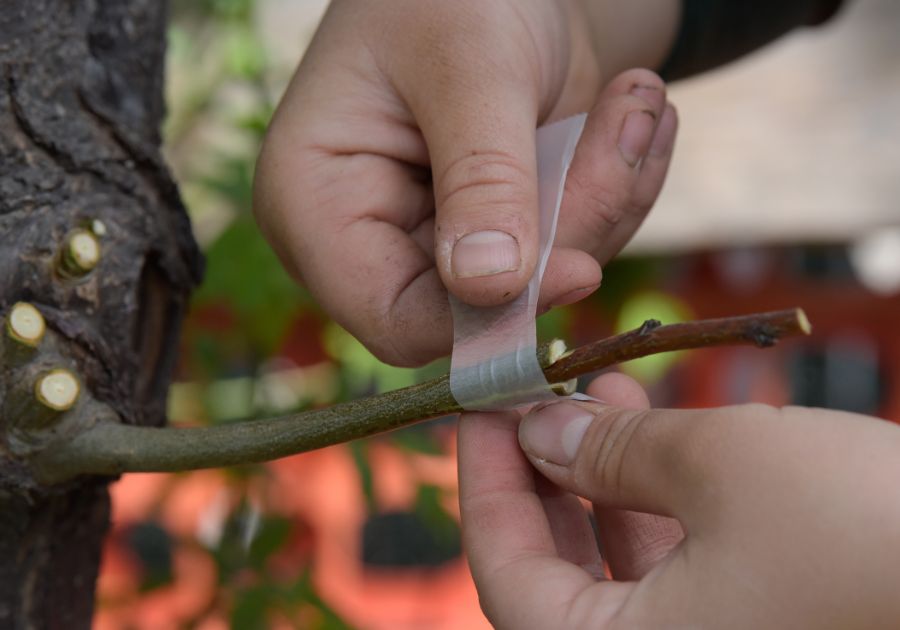
Orchard People's Online Course: Fruit Tree Grafting for Everyone
Learn how to add different fruit cultivars onto an existing tree or how to graft a fruit tree from scratch. Your teachers are Orchard People’s Susan Poizner and Silver Creek Nursery Owner Steph Roth.
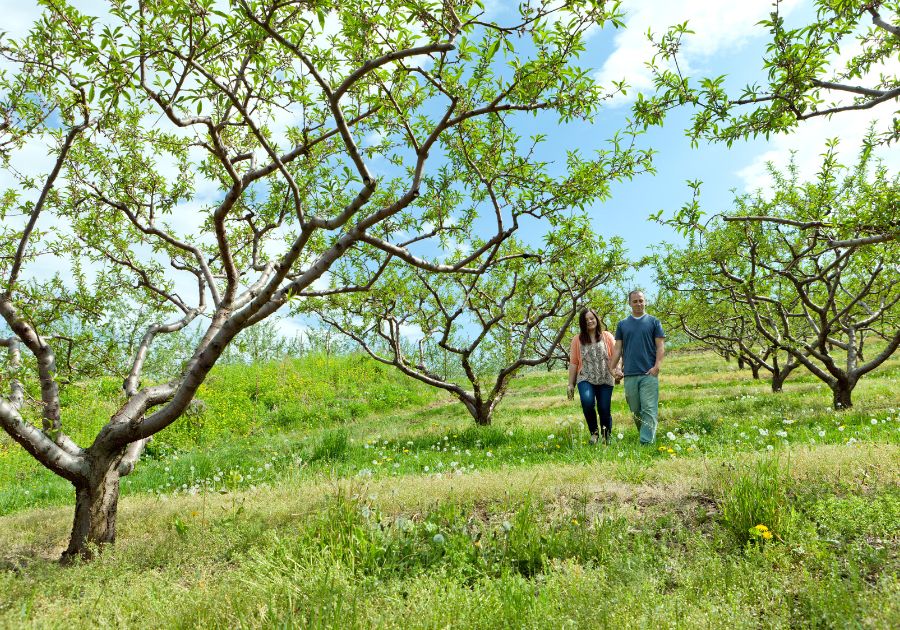
Online Courses with Orchard People!
Learn how to grow your own fruit in the comfort of your home! These courses range from beginner to intermediate and contain everything you need to confidently grow fruit trees, naturally and productively.
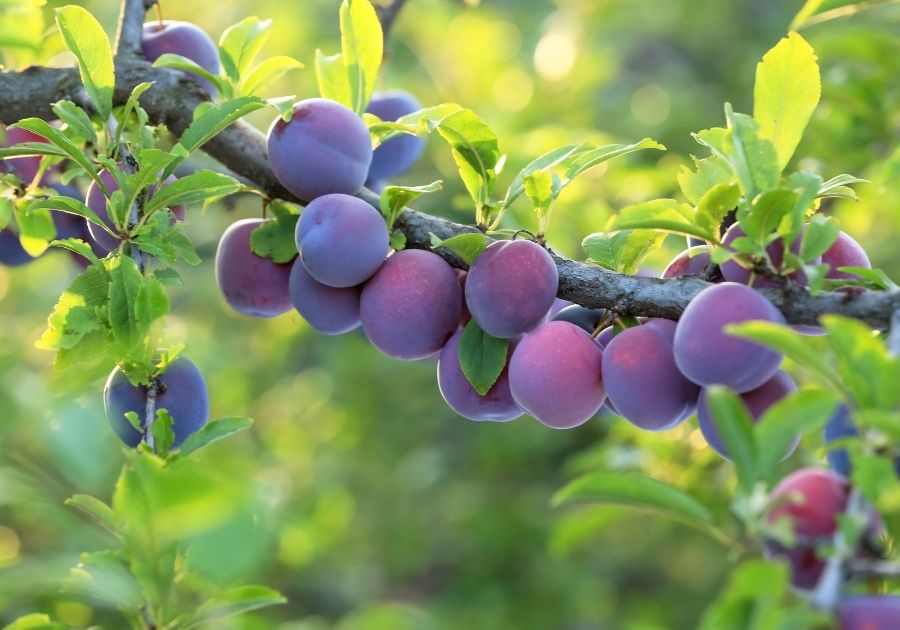
Orchard People's Online Course: Growing Fruit Trees: A Beginner's Guide
Urban orchardist and fruit tree care educator Susan Poizner shares proven secrets for growing healthy, productive organic fruit trees. 1-hour.
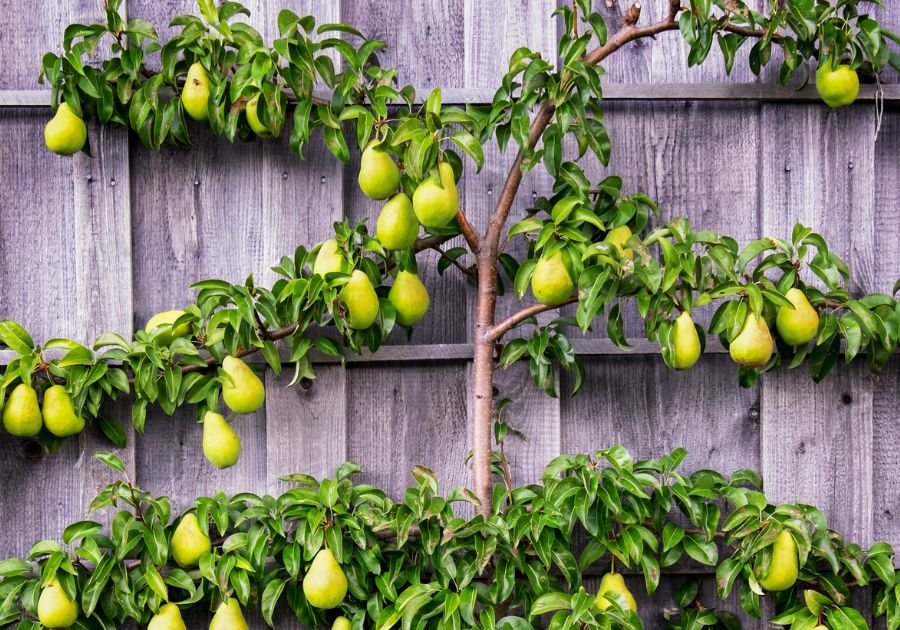
Orchard People's Online Course: Certificate In Fruit Tree Care
Learn how to select a fruit tree for your unique conditions. Learn planting, tree care, pruning, pest and disease prevention, soil and fertility management and more. 8-hours. For new and intermediate level growers.
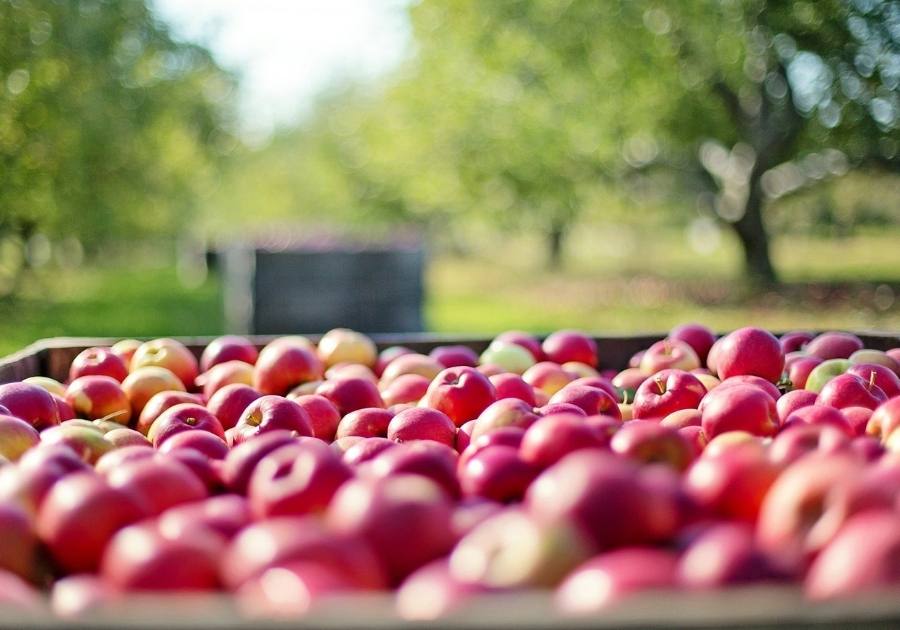
Orchard People's Online Course: Managing Fruit Tree Pests & Disease (IPM)
IPM allows you to minimize the use of sprays while improving tree health. 7-hours. For beginner and intermediate growers.
Blog posts
View all-

Salt-Brine Sunchoke Ferment
This blog post will be a quick one; I just want to get a little something foodie posted since we've been so busy with spring goings-on (plant orders, dormant grafting,...
Salt-Brine Sunchoke Ferment
This blog post will be a quick one; I just want to get a little something foodie posted since we've been so busy with spring goings-on (plant orders, dormant grafting,...
-

Pruning an Old, Neglected Apple Tree
If you’re ready to rejuvenate your old fruit trees, or you’ve inherited a space that has an old tree (or forgot to prune your trees for the past decade -...
Pruning an Old, Neglected Apple Tree
If you’re ready to rejuvenate your old fruit trees, or you’ve inherited a space that has an old tree (or forgot to prune your trees for the past decade -...
-

Pruning Berry Bushes & Vines
There are key things it is worth knowing for certain berries & vines, and that’s what we’ll cover below. We will look at any relevant details for all seasons of...
Pruning Berry Bushes & Vines
There are key things it is worth knowing for certain berries & vines, and that’s what we’ll cover below. We will look at any relevant details for all seasons of...



